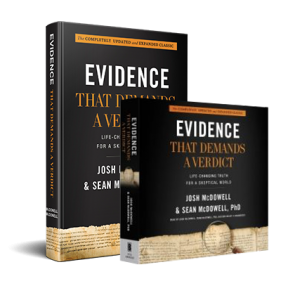Important early New Testament manuscripts validate the reliability of the Bible.
The Bible we use today originates from early historical documents. Scholars are able to assess the importance of a manuscript by how much of the Bible it includes, and by the date assigned to it. What helps them to determine the age of a manuscript? Numerous factors, including the material used, the letter size and form, text divisions, ornamentation, the ink color, and even Carbon-14 dating.
Let’s look at a handful of important early New Testament manuscripts that scholars have discovered so far. Each serves to validate that our modern Bible is, indeed, a reliable representation of those early writings.

These Manuscripts Validate the New Testament:
John Rylands MS (AD 130)
This papyrus fragment, also known as “P52,” is encased within a climate-controlled cabinet located inside the John Rylands Library of Manchester, England. The manuscript fragment was among a group acquired on the Egyptian market in 1920, but not translated until 1934. The fragment contains words from the account of Jesus’ trial before Pilate. As the papyrus contains writing on both sides, it must be from a codex, a type of book, rather than a scroll. If you missed our earlier blog post on materials used to write the Bible, we invite you to give it a read. This portion of the Gospel of John is so old that it helps to confirm the traditional date of the composition of the Gospel to be about the end of the first century.
As writer Tim Challies says in his blog post The History of Christianity in 25 Objects, “This little scrap of papyrus is our oldest historical link to the New Testament Scriptures. It represents the thousands of manuscripts and fragments of manuscripts that have survived the centuries.”
He adds, “Of the manuscripts that remain to us today, no two are exactly the same. How then can we have confidence that the Bible we possess today is the Bible as God inspired and intended it? This is where we are grateful for the discipline of textual criticism. Textual critics are scholars who examine and evaluate all the surviving manuscripts in order to accurately reproduce the original text. And here we begin to see the importance of this little fragment of papyrus encased in glass in John Rylands Library. From this fragment we know that already in the first half of the second century there were Christians along the Nile and these Christians were reading the very same words of God that we read today.”
Bodmer Papyrus II (AD 150-200)
Martin Bodmer, who began amassing his collection of the world’s best books and early writings at the age of 16, died in 1971. He turned down an offer to sell his expansive collection. In 2003 the present Bodmer Library of World Literature opened in Cologny, near Geneva, Switzerland. Among the approximate 160,000 items is a copy of the Guttenberg Bible, and a group of manuscripts — “P66,” “P72,” and “P75,” some of the world’s earliest Christian writings.
“P66,” dating from AD 200 or earlier, contains most of John’s gospel. This codex is just one century removed from the time of the autograph (original text). “P72” is the earliest copy of the epistle of Jude and the two epistles of Peter. “P75,” which scholars date between AD 175 and 225, is the earliest known copy of the Gospel according to the Luke and one of the earliest of the Gospel according to John.
The Diatessaron (c. AD 170)
The Diatessaron, which means “Harmony of Four” was created by Tatian, a Christian writer in the second century. It combines the four canonical Gospels into a single harmonious narrative. Though Tatian closely followed the wording of the Gospels, he put the verses in a different sequence.
The Diatessaron was used as the standard Gospel text in the liturgy of the Syrian Church for two centuries. It has significance as an early manuscript because the remaining copies bear witness to the earlier Gospels.
A. Chester Beatty Papyri (AD 200)
These third century papyrus codices were purchased by British mining engineer A. Chester Beatty in the 1930s from a dealer in Egypt. Also known as “P45,” “P46,” and “P47,” they are housed in Beatty’s gift to the world: the Chester Beatty Library in Dublin, Ireland.
“P45” contains part of a codex of Matthew, Mark, Luke, John, and Acts. “P46” contains letters written by Paul: Romans, Hebrews, I and II Corinthians, Ephesians, Galatians, Philippians, Colossians, and I Thessalonians. “P47” contains the oldest known text of the Book of Revelation.
Codex Alexandrinus (Ad 400)
Located in the British Library in London, this early-5th century Greek manuscript contains almost the entire Bible. Interestingly, it is one of the earliest books to incorporate significant decoration to mark major divisions in the text.
Per the British Library website, “The beginning lines of each book are written in red ink and sections within the book are marked by a larger letter set into the margin. Words are written continuously in a large square uncial hand with no accents and only some breathing marks. It contains 773 pages, 630 for the Old Testament and 143 for the New Testament. Each page measures 32cm x 26.5 cm.”
Codex Bezae Cantabrigiensis (c. AD 450)
Located in the Cambridge University Library in England, the Codex Bezae dates from the 5th century. It uniquely contains the Gospels and Acts, in both Greek and Latin pages, which face each other. The only book that is complete is the Gospel of Luke; pages are missing from the other books. The codex was acquired by the theologian Theodore Beza in 1562 from a monastery in Lyon, France. He gifted it to the University in 1581.
Codex Vaticanus (AD 325-350)
Located in the Vatican Library in Rome since before 1475, this manuscript contains nearly all of the Bible. After a hundred years of textual criticism, many consider this codex to be one of the most trustworthy Greek manuscripts of the New Testament text.
Codex Sinaiticus (AD 350)
This extremely important manuscript, discovered in 1844 by Constantin von Tischendorf, a leading biblical scholar in his day, at the Monastery of St. Catherine at the foot of Mt. Sinai in Israel, is located in the British Library. The St. Catherine’s Monastery and libraries in Germany and in Russia hold a few separate pages. The manuscript contains almost all of the (4th century) New Testament and over half of the Old Testament. For the Gospel texts, its reliability is considered second only to the Codex Vaticanus. For Acts, its reliability is equal to the Codex Vaticanus, and for the epistles, its reliability is ranked first.
The discovery of this manuscript is a fascinating story. Tischendorf, while visiting St. Catherine’s, chanced to see some leaves of parchment in a waste basket of papers destined to light the oven of the monastery. Upon examination, they proved to be part of a copy of the Septuagint version of the Old Testament. Tischendorf retrieved from the basket no less than 43 leaves, no doubt horrified when a monk casually remarked that two basket loads of similarly discarded leaves had already been burned.
Great Reason to Believe
All told, the sheer number of New Testament manuscripts and the earliness of the extant manuscripts give us great reason to believe the New Testament accurately transmits the contents of the originals.
As we mentioned in a previous blog post titled Testing the Historical Reliability of the New Testament, of just the known 5,800+ Greek New Testament manuscripts, there are more than 2.6 million pages! That equates to one mile of New Testament manuscripts (and 2.5 miles for the entire Bible), compared with an average four feet of manuscript by the average classical writer. Combining both the Old and New Testament, we have more than 66,000 manuscripts and scrolls!
Is this interesting or what? It’s certainly factual information that you can share with critics who assert that the Bible has not been reliably passed down. Let’s keep going. Join us next week, when we look at how archaeology helps to confirm the historicity of the Bible.

This blog post highlights Josh and Sean McDowell’s recently revised apologetics classic, Evidence That Demands a Verdict. We are certain this fully updated and expanded resource will be an effective evangelism tool for you, and strengthen your faith by answering the toughest questions tossed to you by skeptics. Know what you know, because it’s true. But share this truth with LOVE!




